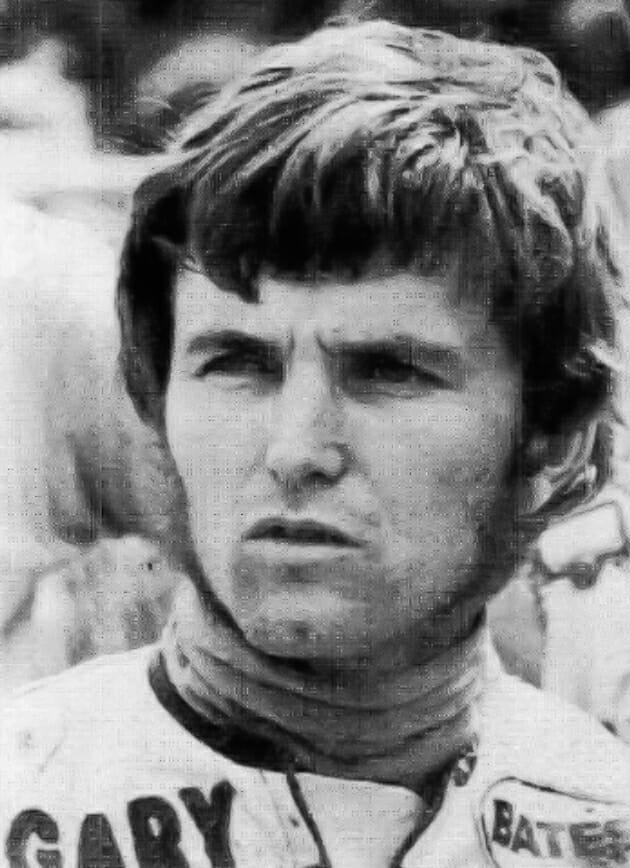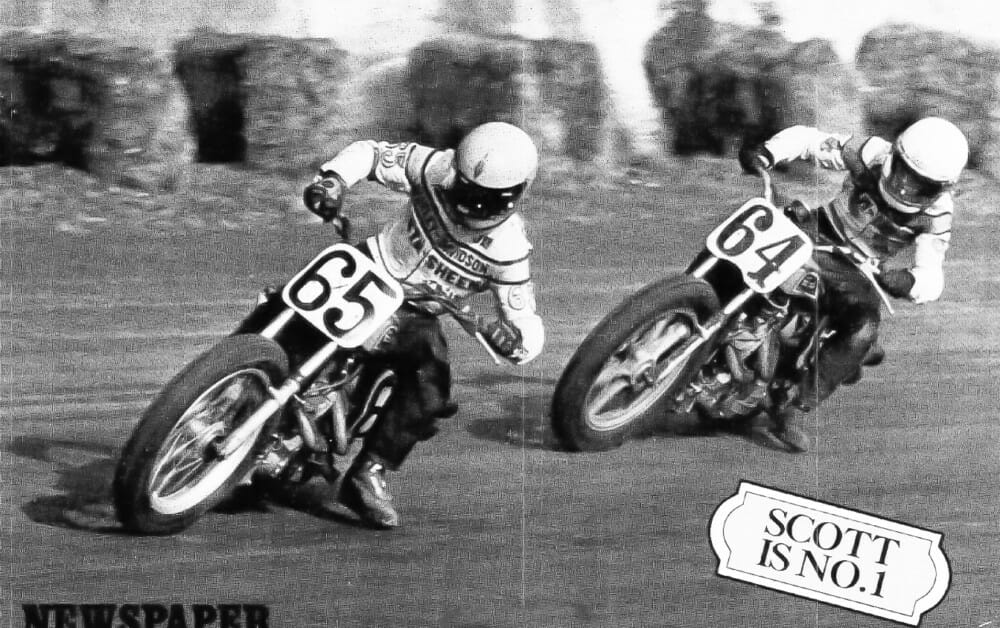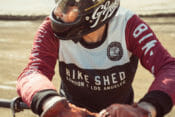Cycle News Archives
COLUMN
This Cycle News Archives edition is reprinted from issue Issue #20, May 26, 2004. CN has hundreds of past Archives columns in our files, too many destined to be archives themselves. To prevent that from happening, we will be revisiting past Archives articles while still planning to keep fresh ones coming down the road -Editor.
The Outsider
By Scott Rousseau
Big news shook the American racing scene in 1976 when it was revealed that AMA Grand National Champion Gary Scott, who had won the 1975 AMA Grand National Championship with the factory Harley-Davidson racing team, would be walking away from the factory and defending his title as a privateer. It marked the first and only time that a factory-backed champion has parted ways with Harley-Davidson in such a manner. So how did it happen?

“I’ve got an interesting theory on that,” says Scott, now 51, retired and living in Phoenix, Arizona. “It was kind of an odd situation, and people will obviously have different opinions about it.
“At the end of 1972, my rookie year, [Harley racing manager] Dick O’Brien offered me a ride with Harley-Davidson. I already had ties with Triumph, who had helped me with a road-race ride that year, so I went to Pete Collman [Triumph’s racing manager], and he offered me a bit more money. I felt loyalty to Triumph, so I agreed to ride for them, and I called O’Brien back and told him no. He was really upset over that. I don’t think that anyone had ever turned him down before.”
Loyalty or no, Scott would not see the top of the podium aboard a factory Triumph in 1973, and although he was able to repeat the consistent season-long performance of his rookie year to finish second in the points standings for the second time in two years, he knew that a long-term relationship with Triumph was not in the cards.
“The next year, Dick O’Brien called me again, and he offered me a lot more money, so I went with Harley-Davidson,” Scott recalls. “But I think there was a lot of resentment between me and him. I was trying to make the best decision at the time [in ’73], but I think he never let go of the fact that I turned him down, and him calling me back was more a case of him not having somebody who could do the job for him than anything.”
Scott made the move to Harley at a time when a factory war between Harley and Yamaha was at a fever pitch. Yamaha had taken the AMA Grand National title with Kenny Roberts in ’73, and Harley was on the ropes. Roberts would repeat in ’74, in no small part due to a superior road racing program that paid off with three additional wins on the season. Even though he was a dirt-only rider, Scott scored three wins and was strong enough once again to land second in the standings. Even after proving himself on the Harley, Scott says he felt no respect from O’Brien.
“It was just a really strained relationship,” Scott says. “Most of the Harley guys were from Michigan, and I was the outsider from California, and I was making more money than they were. They didn’t like that.”

More focused than ever, Scott came back in 1975 and had what is arguably the best season of his career. In the end, even though he only added two more wins to his tally, Scott became the 1975 AMA Grand National Champion. In light of his accomplishment, it would seem a foregone conclusion that Scott and Harley would be back together to defend the number-one plate in 1976. It didn’t turn out that way.
“After I got number one, I went back and talked with Dick O’Brien,” Scott recalls. “This was back in the days when it was all verbal contracts. I never signed a contract with anybody. So, I went back, and he offered me a deal, and I said, ‘Well, I know that you’re going to do a lot of extra PR stuff with me, so I’d like to get a little extra money for that.’ I went home, and he didn’t call me, and then it got to be the middle of December, so I called him. He told me that I didn’t have a ride.”
It was more mutual than it sounds, says Scott, who never felt much in the way of moral support from the factory while he was there.
“We just didn’t get along, but what I really think happened is that in order for O’Brien to get the big budget he wanted, he had to have a reason for it,” Scott says. “So it was, ‘Oh, Gary Scott has left, and we don’t have the number-one plate. Now we need the money to go get it because this bastard guy ran off and left us.’ To this day I believe that’s how he justified it.”
Maybe Scott’s argument has merit. After all, Harley did come back in 1976 with an army of factory riders—including a new hot rookie talent, a Michigan kid named Jay Springsteen—and for what? History shows that almost wasn’t enough, as Scott put together a gaggle of bikes consisting of his ex-factory Harleys and Triumphs for dirt-track racing and a Yamaha road racer to defend his title. He even went so far as to claim two motorcycles from his competitors during the season in the hope of swinging the title race his way. Ultimately, though, the number one went back to the Harley camp.
“The bottom line is that they were just damn lucky that Springsteen came along when he did,” Scott says. “He had so much natural talent. I raced as hard as I could that year.”
Scott continued on through the 1985 season, but he never got his title back. Even so, today he says he has no regrets.
“I had some great opportunities and made some good money,” Scott says. “I came along when it was a real profession, and it was good. I look back and see that there are a few situations where I could have been more diplomatic, but that comes with age and wisdom. I was and still am just a mirror of what comes at me, and back then it was stand up or tuck your tail and go home.” CN
Click here to read Archives Column in the Cycle News Digital Edition Magazine.
Click here for all the latest Flat Track racing news.
Subscribe to nearly 50 years of Cycle News Archive issues
